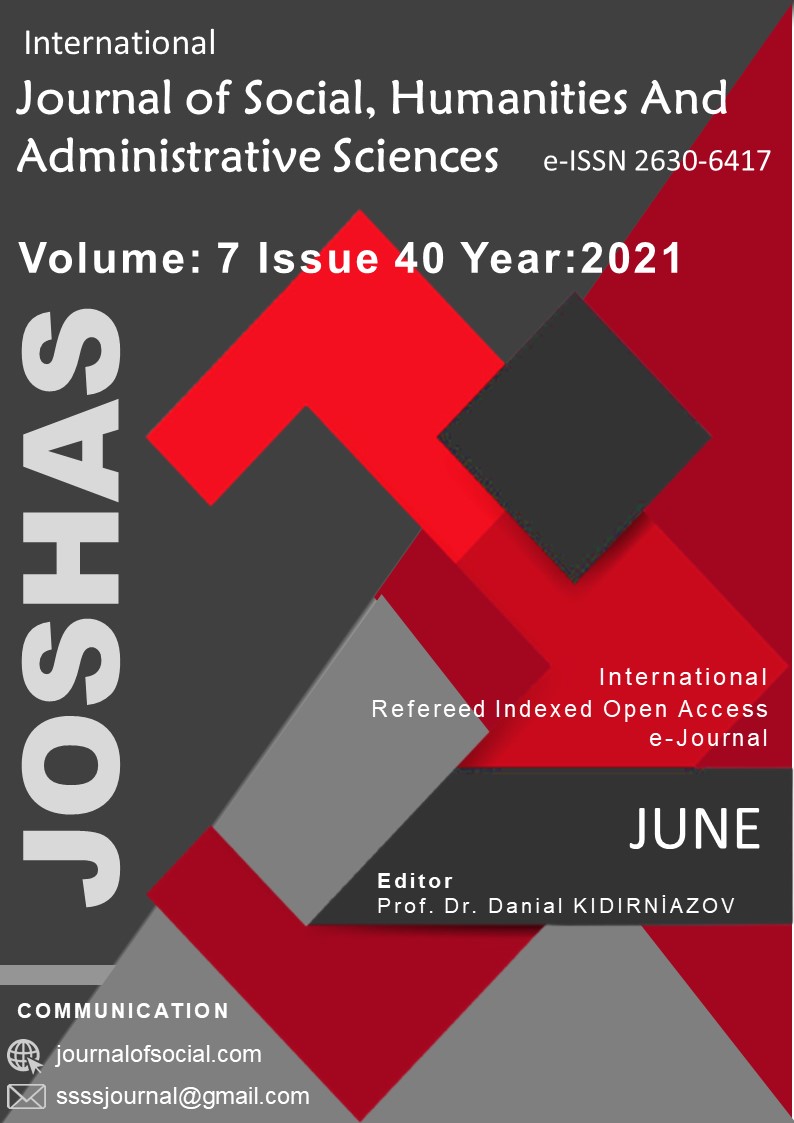İLKÖĞRETİM İKİNCİ KADEME ÖĞRENCİLERİNİN MATEMATİK DERSİ BAŞARILARININ İÇ İÇE VARYANS ANALİZİ İLE KARŞILAŞTIRILMASI: SİVAS İLİ ÖRNEĞİ
Author :
Abstract
Bu çalışmanın amacı, İlköğretim ikinci kademe öğrencilerinin Matematik dersindeki başarı farklılıklarında okulun etkisini iki yönlü iç içe varyans analizi yöntemi ile belirlemektir. Bu amaçla, Sivas merkezindeki sekiz okuldan Matematik ders not ortalamaları alınarak incelenmiştir. Öğrencilerin, aldığı ders notları bağımlı değişken ve bu aldıkları notları etkileyen okul ve şubeler faktörler olarak ele alınarak, okulların arasındaki başarı durumu İç İçe Varyans Analizi ile incelenmiştir. Okullar ve şubeler arasında fark olduğu tespit edilerek sonuçlar değerlendirilmiştir. İki yönlü iç içe sınıflandırma ile eğitim veren okullar arası ve okullar içi/şubeler arası etkinin önemli olduğuna ulaşılmıştır. Beşinci ve yedinci sınıfta okuyan öğrencilerin Matematik ders notları incelenmiş, en yüksek not ortalamasının yedinci okula ve en düşük not ortalamasının ise birinci okula ait olduğu görülmüştür. Altıncı ve sekizinci sınıf öğrencilerinin ders not ortalamaları incelendiğinde ise en yüksek not ortalaması beşinci okulda; en düşük not ortalaması ise birinci okula aittir. Bununla birlikte altıncı sınıflarda şubeler arası en düşük ortalamanın altıncı okulun şubesine ait olduğu görülmüştür.
Keywords
Abstract
This study aim is to determine the success ranks of primary school second grade students in the Mathematics course by using the two nested variables analysis method of the school. For this type, Mathematics course averages from eight schools in Sivas center were analyzed. Students' learner grades are variable variables and their success status among the schools that affect those who do not take this has been analyzed with Internal Variance analysis. The results where there is a difference between schools and branches were evaluated. Significant impact between schools and schools / branches providing education with two-dimensional internal classification has been achieved. Mathematics course grades in the fifth and seventh grades were examined, and it was observed that the highest average belonged to the seventh school and the lowest average belonged to the first school. When the grade averages of the sixth and eighth grade students are analyzed, the highest grade point average is in the fifth school; the lowest average belongs to the primary school. It was observed that the lowest average among the branches in the sixth grade belongs to the sixth school's branch.
Keywords
- Adilson, S., Francisco C., João, M. ve Miguel, F. (2013). “One-sided tolerance interval in a two-way balanced
- Adilson, S., Francisco C., João, M. ve Miguel, F. (2013). “One-sided tolerance interval in a two-way balancednested model with mixed effects”. Department of Science and Technology, University of Cape Verde, Polytechnic Institute of Tomar.
- Efe, E., Bek, Y. ve Şahin, M. (2000). “SPSS’te Çözümleri ile İstatistik Yöntemler II”. Kahramanmaraş Sütçüimam Üniversitesi Rektörlüğü, Bilgisayar Araştırma ve Uygulama Merkezi. 10:23-72.
- Fırat, M. Z. (2000). “Dengeli İki Seviyeli Şansa Bağlı İç-İçe Düzenlenmiş Denemelerde VaryansBileşenlerinin Tahmini İçin Varyans Analizi, Maksimum Olabilirlik ve Kısıtlanmış Maksimum OlabilirlikMetotlarının Karşılıklı Olarak İncelenmesi”. Anadolu Üniversitesi Bilim ve Teknoloji Dergisi. 1:105-113.
- Gedik, İ. (2010). İç İçe Tasarımlarda Dayanıklı Analiz ve Uygulamaları. Yüksek Lisans Tezi, Ankara Üniversitesi, Fen Bilimleri Enstitüsü.
- Karatepe, M. (2018). Sivas İli Genelindeki Ortaöğretim Kurumlarının İç İçe Varyans Analizi Yöntemi ile Karşılaştırılması. Yüksek Lisans Tezi, Cumhuriyet Üniversitesi, Sosyal Bilimler Enstitüsü.
- Krishnamoorthy, K. ve Lian, X. (2012). “Closed-form approximate tolerance intervals for some general linear models and comparison studies”. Journal of Statistical Computation and Simulation. 82(4), 547-563.
- Montgomery, Douglas (2013). The Design and Analysis of Experiments. (5th Edition). John Wiley, New York.Ojima, Y. (2000). “Generalized staggered nested designs for variance components estimation”. Journal of Applied Statistics. 278‐8510.
- Özdamar, K. (1997). Paket Programlar ile İstatistiksel Veri Analizi. Eskişehir: Fen Fakültesi Yayınları
- Seçgin, H. (2005). İç İçe Çok Etkenli Deney Düzenleri ve Bir Uygulama. Yüksek Lisans Tezi, Ondokuz MayısShirley, D., Stanley, W. and Daniel, C. (2004). Statistics for Research. Morgantown West Virginia, John Wiley and Sons. ISSN 1940-6517.
- Şenoğlu, B. ve Acıtaş, Ş. (2014). İstatistiksel Deney Tasarımı: Sabit Etkili Modeller. Ankara: Nobel Akademik Yayıncılık.
- The Two-Stage Nested Design (2018). The Pennsylvania State University, Eberly Collage of Science. Erişim Tarihi: 15.06.2019. https://newolinecourses.science.psu.edu
- Yıldız, N. ve Bircan, H. (1994). Araştırma ve Deneme Metodları. Erzurum: Atatürk Üniversitesi Ziraat Fakültesi Yayınları
- Yolcu, H. İ., Balcıoğlu, S., Fırat, Z. ve Karabağ, K. (2004). “Beyaz Yeni Zelanda Tavşanlarında CanlıAğırlıklara ait Varyans Unsurlarının Farklı Yöntemlerle Tahmini”. Akdeniz Üniversitesi Ziraat Fakültesi Dergisi. 17(1):81-85.
